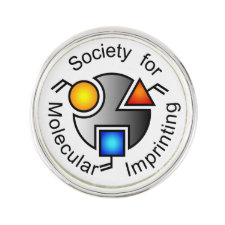
Authors: Esfandyari-Manesh M, Javanbakht M, Dinarvand R, Atyabi F
Article Title: Molecularly imprinted nanoparticles prepared by miniemulsion polymerization as selective receptors and new carriers for the sustained release of carbamazepine.
Publication date: 2012
Journal: Journal of Materials Science: Materials in Medicine
Volume: 23
Issue: (4)
Page numbers: 963-972.
DOI: 10.1007/s10856-012-4565-y
Alternative URL: https://www.researchgate.net/publication/221829624_Molecularly_imprinted_nanoparticles_prepared_by_miniemulsion_polymerization_as_selective_receptors_and_new_carriers_for_the_sustained_release_of_carbamazepine
Abstract: Water-compatible imprinted nanoparticles were prepared for carbamazepine as a template and used for the selective extraction and controlled release of carbamazepine. Assay materials and drug delivery carriers were typically used in aqueous environments, so it is generally preferable to prepare solvent-free molecularly imprinted nanoparticles in water using the miniemulsion polymerization method. The present work investigates a bio-analytical strategy generically applicable to imprinted materials for molecular recognition studies, including equilibrium and non-equilibrium binding, and release experiments, increasing the knowledge of the molecular interactions between the template molecules and imprinted nanoparticles. The results showed that the imprinted nanoparticles exhibited a higher binding level and slower release rate than non-imprinted nanoparticles. The selectivity of imprinted nanoparticles for carbamazepine studied in comparison with an analogue compound, oxcarbazepine, the main metabolite of carbamazepine. The recovery and selectivity of carbamazepine in human serum was determined to be 100%, 1.7 times that of oxcarbazepine. The results indicated that carbamazepine-imprinted nanoparticles are appropriate for serum level determination of the drug in therapeutic range. The template to functional monomer ratio as a key factor controlling the recognition and release kinetic mechanism of imprinted nanoparticles is discussed. The imprinted nanoparticles prepared at the appropriate template to functional monomer mole ratio (2:8) exhibited the best drug affinity (5.1 times higher) and a slower drug release rate due to the interaction of carbamazepine with the imprinted cavities within the nanoparticles. Loaded imprinted nanoparticles as drug reservoirs were able to prolong carbamazepine release, in 1% wt sodium dodecyl sulfate aqueous solution, for more than 8 days.
Template and target information: carbamazepine



Join the Society for Molecular Imprinting

New items RSS feed
Sign-up for e-mail updates:
Choose between receiving an occasional newsletter or more frequent e-mail alerts.
Click here to go to the sign-up page.
Is your name elemental or peptidic? Enter your name and find out by clicking either of the buttons below!
Other products you may like:
 MIPdatabase
MIPdatabase









